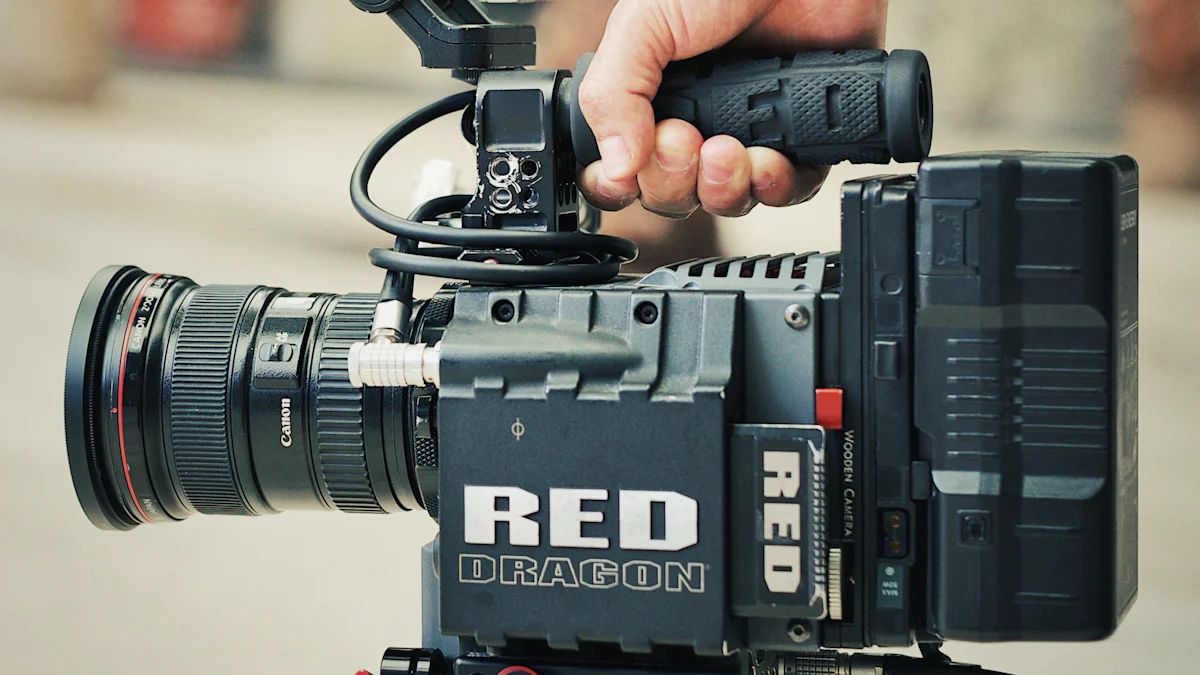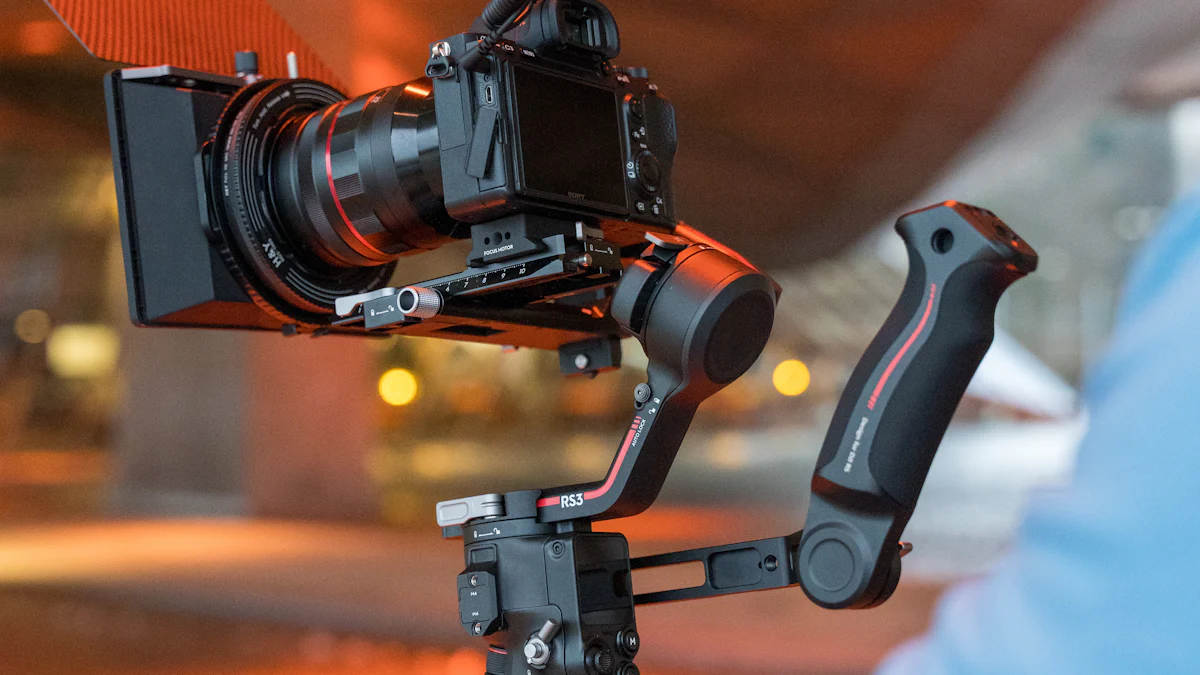Cinematography
Handheld vs Stabilized Cinematography: When to Use Each Shooting Style
By
Alex Darke
July 23, 2024 09:51 pm
Cinematography plays a crucial role in filmmaking. The visual storytelling can captivate audiences and enhance emotional engagement. Two primary shooting styles dominate the field: handheld and stabilized cinematography. Each style offers unique advantages and impacts the viewer's perception differently. Choosing the right shooting style for specific scenarios can significantly influence the narrative and overall film quality. Filmmakers must understand when to use handheld vs stabilized cinematography to achieve the desired emotional and aesthetic effects.
Handheld vs Stabilized Cinematography: Understanding Handheld Cinematography

Image Source: unsplash
Definition and Characteristics
What is Handheld Cinematography?
Handheld cinematography involves holding the camera in the operator's hands instead of using a tripod or other stabilizing equipment. This technique allows for more dynamic and organic shots. The camera operator can move freely, capturing spontaneous moments and following the action closely.
Key Features and Visual Impact
Handheld cinematography often results in footage with noticeable camera shake and movement. This style creates a sense of immediacy and realism. The audience feels as if they are part of the scene. The visual impact includes a raw and gritty aesthetic that can enhance the emotional intensity of a film.
Advantages of Handheld Cinematography
Flexibility and Mobility
Handheld cinematography offers unparalleled flexibility and mobility. The camera operator can quickly adjust angles and follow subjects without the constraints of a fixed setup. This freedom allows for more creative and spontaneous shots. Filmmakers can capture unique perspectives and dynamic movements.
Creating a Sense of Realism and Intimacy
Handheld cinematography excels at creating a sense of realism and intimacy. The camera's movements mimic the natural motions of human vision. This technique immerses the audience in the scene. Cinematographer Idziak described this effect as "breathing with them," highlighting how the camera becomes an extension of the operator's body. This connection enhances the emotional engagement of the viewer.
Disadvantages of Handheld Cinematography
Potential for Shaky Footage
One significant drawback of handheld cinematography is the potential for shaky footage. Excessive camera shake can distract the audience and detract from the viewing experience. Filmmakers must strike a balance between dynamic movement and visual stability. Proper technique and practice can mitigate some of these issues.
Physical Strain on the Operator
Handheld cinematography can also impose physical strain on the camera operator. Holding and maneuvering the camera for extended periods can lead to fatigue and discomfort. This strain can affect the quality of the footage and the operator's ability to perform consistently. Filmmakers should consider the physical demands when planning handheld shots.
When to Use Handheld Cinematography
Action and Chase Scenes
Handheld cinematography shines in action and chase scenes. The dynamic movement of the camera mirrors the intensity of the action. This technique creates a sense of urgency and excitement. Audiences feel as if they are part of the chase. The shaky footage adds to the chaos and unpredictability of the scene. Filmmakers often use handheld shots to heighten the tension and immerse viewers in the moment.
Documentary and Real-life Scenarios
Documentary filmmakers frequently rely on handheld cinematography. This style allows for spontaneous and authentic footage. The camera operator can follow subjects closely, capturing real-life moments as they unfold. The natural movements of the handheld camera create a sense of realism. Viewers feel connected to the subjects and their experiences. This approach enhances the emotional impact of the documentary.
Creating a Raw and Gritty Aesthetic
Handheld cinematography excels at creating a raw and gritty aesthetic. The unpolished look of the footage conveys authenticity. Filmmakers use this style to evoke strong emotions and portray harsh realities. The audience feels the intensity and rawness of the scenes. Experimental filmmaker Jonas Mekas praised handheld shots for their artistic freedom. This technique allows filmmakers to push creative boundaries and deliver powerful visual storytelling.
Handheld vs Stabilized Cinematography: Understanding Stabilized Cinematography

Image Source: pexels
Definition and Characteristics
What is Stabilized Cinematography?
Stabilized cinematography involves using equipment like gimbals, Steadicams, or tripods to keep the camera steady. This technique minimizes camera shake and ensures smooth footage. The operator can move the camera without introducing unwanted motion.
Key Features and Visual Impact
Stabilized cinematography produces smooth and professional-looking footage. This style creates a polished and controlled visual experience. The audience can focus on the scene without distractions from camera movement. Filmmakers often use this technique to achieve a high degree of visual clarity and stability.
Advantages of Stabilized Cinematography
Smooth and Professional Footage
Stabilized cinematography excels at delivering smooth and professional footage. The use of stabilizing equipment eliminates unwanted camera shake. This results in clean and stable visuals. High-budget productions often rely on this technique to maintain a polished aesthetic.
Reduced Physical Strain on the Operator
Stabilized cinematography reduces physical strain on the camera operator. The equipment supports the camera's weight, allowing the operator to focus on framing and composition. This setup enables longer shooting sessions without causing fatigue. The operator can maintain consistent performance throughout the shoot.
Disadvantages of Stabilized Cinematography
Limited Flexibility and Mobility
Stabilized cinematography has limitations in flexibility and mobility. The equipment can restrict the operator's movements. Quick adjustments and spontaneous shots become challenging. Filmmakers may find it difficult to capture dynamic and unpredictable scenes.
Equipment Costs and Setup Time
Stabilized cinematography involves significant equipment costs and setup time. High-quality stabilizing gear can be expensive. The setup process requires careful calibration and adjustment. Filmmakers need to allocate additional time and resources for these preparations. This investment may not be feasible for low-budget projects.
When to Use Stabilized Cinematography
High-budget Productions
High-budget productions often require stabilized cinematography. The smooth and professional footage enhances the film's visual appeal. Audiences expect high-quality visuals from big-budget films. Stabilized shots meet these expectations by providing clear and steady images. Filmmakers can create a polished look that aligns with the production's overall quality. Investing in stabilizing equipment ensures that the final product meets industry standards.
Smooth Tracking Shots
Stabilized cinematography excels at creating smooth tracking shots. These shots follow subjects with precision and fluidity. The camera can move alongside characters without introducing unwanted motion. This technique is ideal for scenes that require continuous movement. For example, a character walking through a bustling city benefits from a stabilized shot. The audience can focus on the character without distractions from camera shake. Filmmakers use stabilized tracking shots to maintain visual clarity and coherence.
Professional and Polished Aesthetic
A professional and polished aesthetic often relies on stabilized cinematography. This style provides a controlled visual experience. The audience can fully engage with the scene without being distracted by camera movement. Filmmakers achieve a high degree of visual clarity and stability. This approach suits genres like drama or romance, where subtlety and nuance are crucial. The polished look enhances the storytelling by allowing viewers to immerse themselves in the narrative.
Handheld vs Stabilized Cinematography: Comparative Analysis
Visual Impact
Handheld vs Stabilized: Aesthetic Differences
Handheld cinematography creates a raw, gritty aesthetic. The camera shake and movement immerse the audience in the scene. This style evokes a sense of urgency and realism. In contrast, stabilized cinematography delivers smooth, polished visuals. The steady footage provides a controlled viewing experience. This technique suits genres requiring visual clarity and elegance.
Audience Perception and Engagement
Handheld shots engage viewers by making them feel part of the action. The dynamic movement heightens emotional intensity. Audiences often feel a stronger connection to the characters. Stabilized shots, however, offer a more detached perspective. The smooth visuals allow viewers to focus on the narrative without distractions. This approach enhances scenes that require subtlety and nuance.
Practical Considerations
Budget and Resources
Handheld cinematography requires minimal equipment. Filmmakers can achieve effective results with a basic camera setup. This method suits low-budget projects. Stabilized cinematography, however, demands significant investment. High-quality stabilizing gear can be expensive. Productions must allocate resources for equipment and maintenance.
Time and Effort Required
Handheld shooting allows for quick setup and adjustments. Filmmakers can capture spontaneous moments with ease. This flexibility saves time during production. Stabilized shooting, however, involves meticulous preparation. The setup process requires careful calibration. Filmmakers must invest time to ensure optimal performance.
Technical Considerations
Equipment and Setup
Handheld cinematography relies on the operator's skill. The camera remains free from support mechanisms. This method offers maximum mobility. Stabilized cinematography depends on specialized equipment. Tools like gimbals and Steadicams provide stability. The setup process includes balancing and fine-tuning the gear.
Skill Level of the Operator
Handheld shooting demands physical endurance and precision. Operators must control the camera's movement effectively. Experience and practice enhance the quality of handheld footage. Stabilized shooting, however, requires technical expertise. Operators must understand the equipment's mechanics. Proper training ensures smooth and professional results.
Filmmakers must choose the right shooting style to enhance their projects. Handheld cinematography offers flexibility and realism, perfect for action scenes and documentaries. Stabilized cinematography provides smooth, professional visuals, ideal for high-budget productions and polished aesthetics. Balancing creativity and practicality remains crucial. Filmmakers should consider project requirements, budget, and desired emotional impact. Effective use of both styles can elevate storytelling and captivate audiences.

About the Author
Alex Darke is an Emmy-winning filmmaker, founder of the production company Momentous and owner of Filmmaking Central.

Filmmaking Central is a cutting-edge e-learning company dedicated to empowering aspiring filmmakers and content creators worldwide. With a robust library of comprehensive courses, expert-led workshops, and interactive learning materials, Filmmaking Central provides students with unparalleled access to industry professionals and innovative tools. By fostering an online community of passionate learners and storytellers, the platform aims to inspire creativity, develop essential skills, and ultimately cultivate the next generation of visionary filmmakers.
CONTACT
📍Las Vegas, NV
☎️ +1 888 494 5107
📧 hello@filmmakingcentral.com
SOCIAL
A Momentous Company © Filmmaking Central, All Rights Reserved. Here's our cookie policy page with all sorts of fun stuff. You know, privacy policy, disclaimer, and terms kind of stuff. Go back to the homepage or check out our courses and subscribe to our YouTube channel. You can also see our anti-SPAM policy, DCMA notice, earnings disclaimer, and affiliate disclosure.
